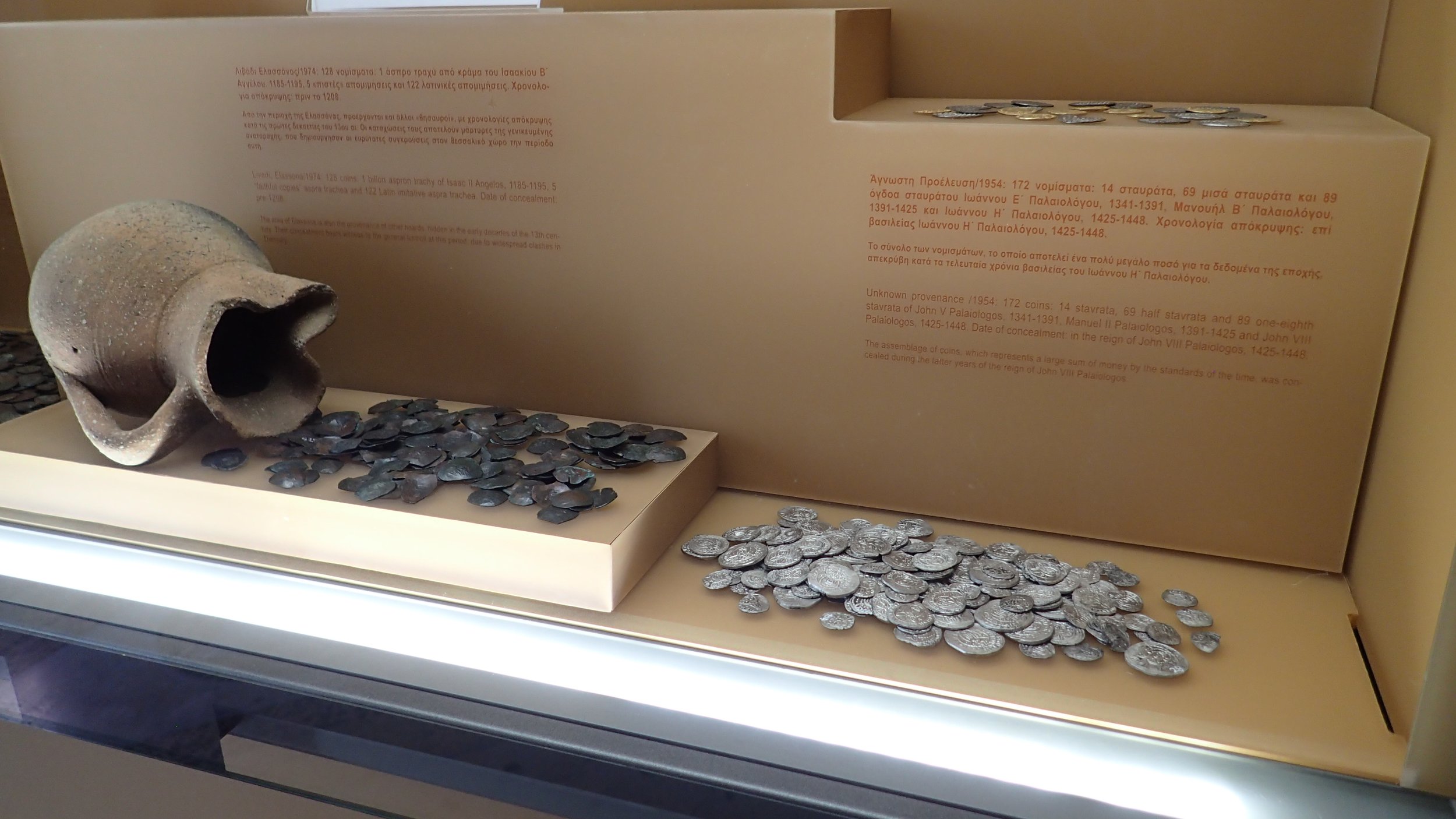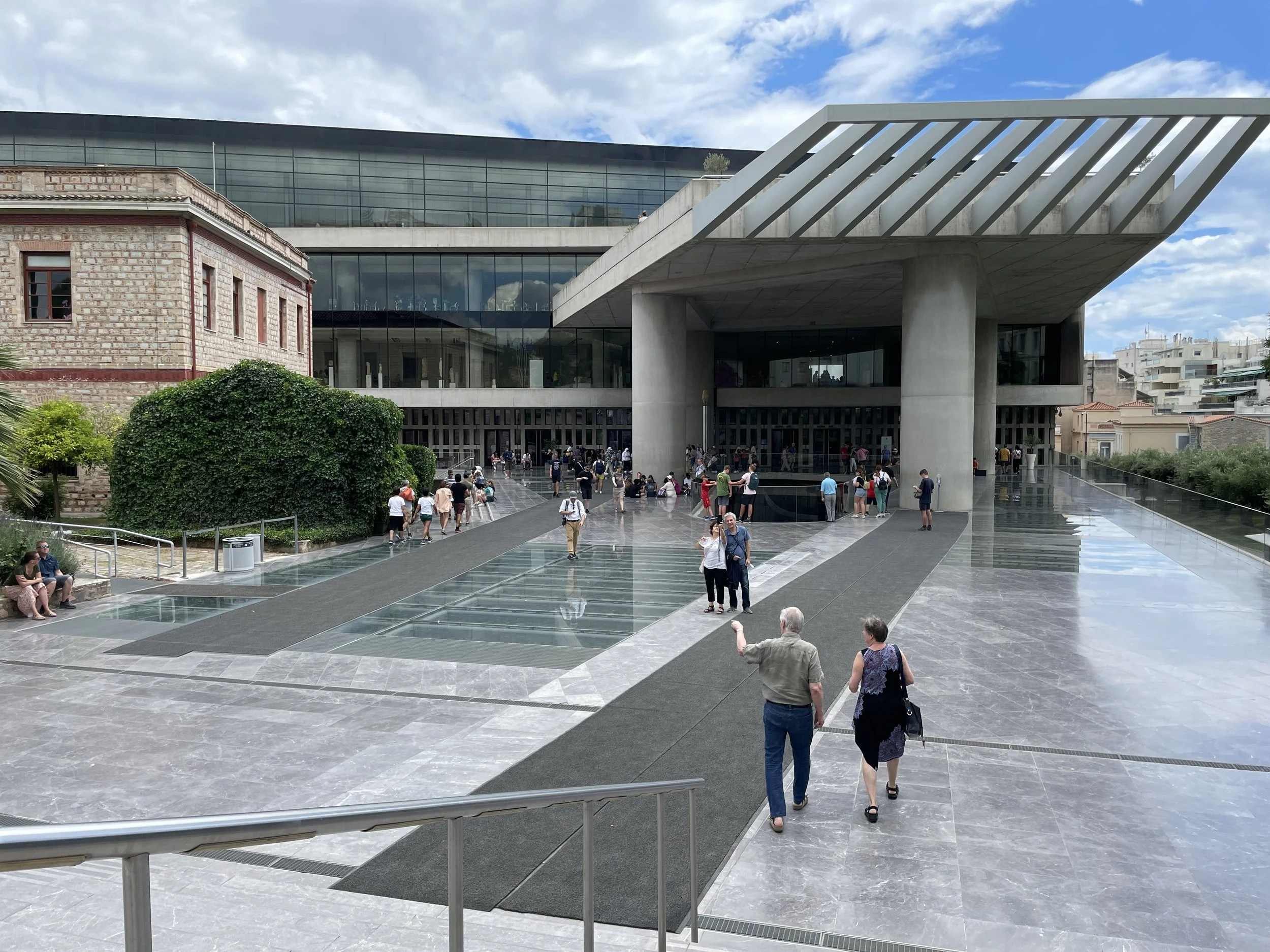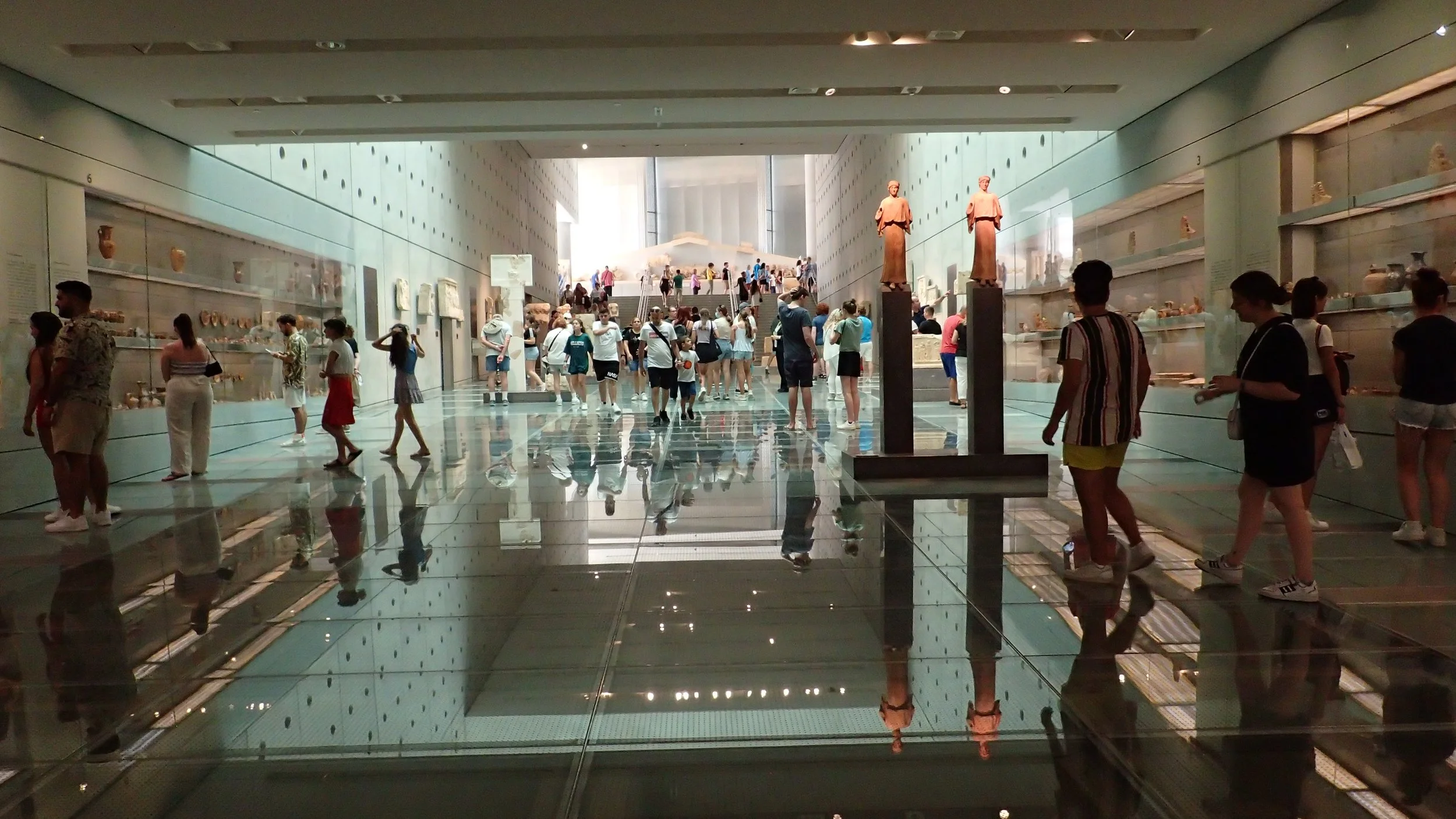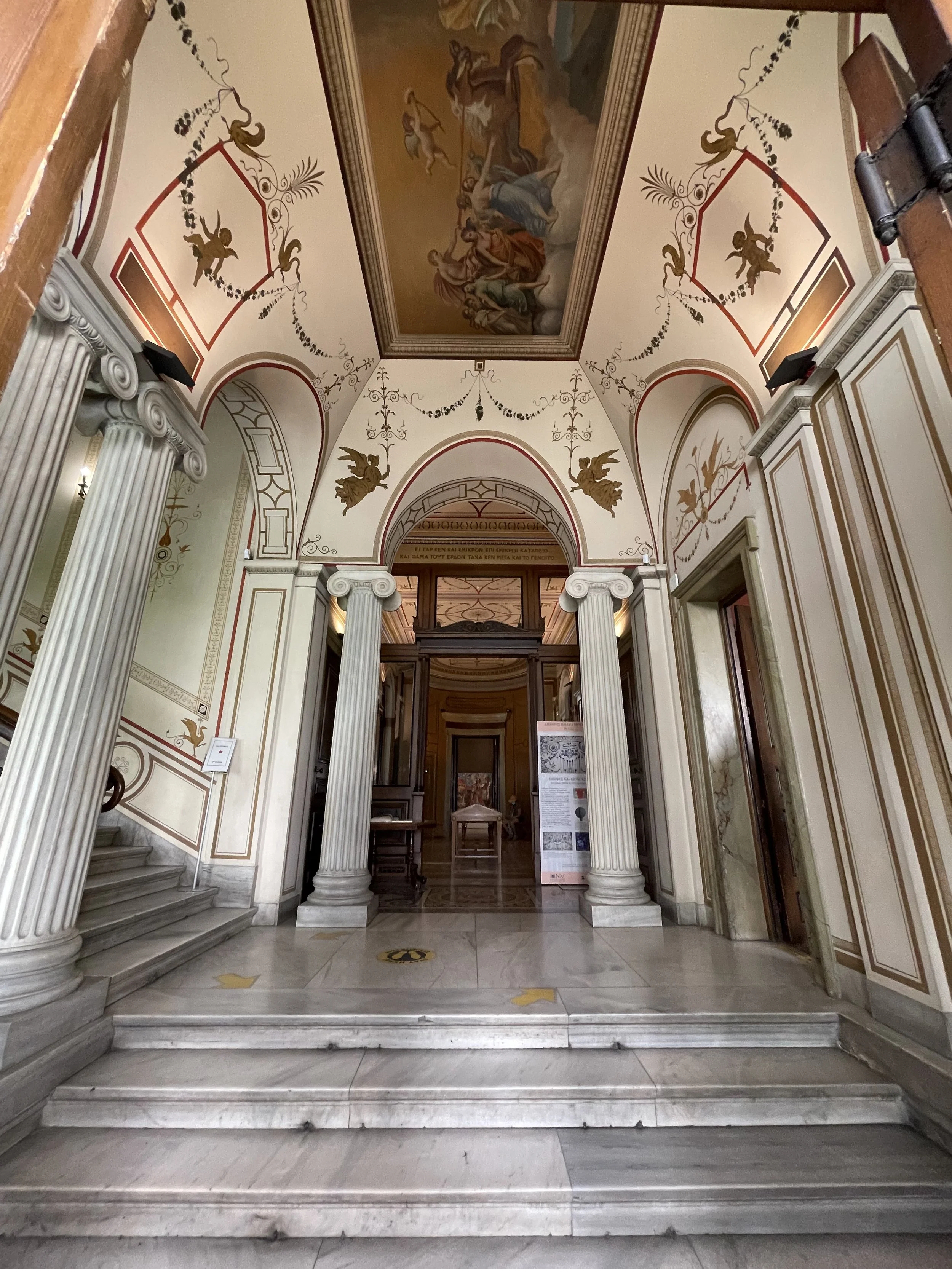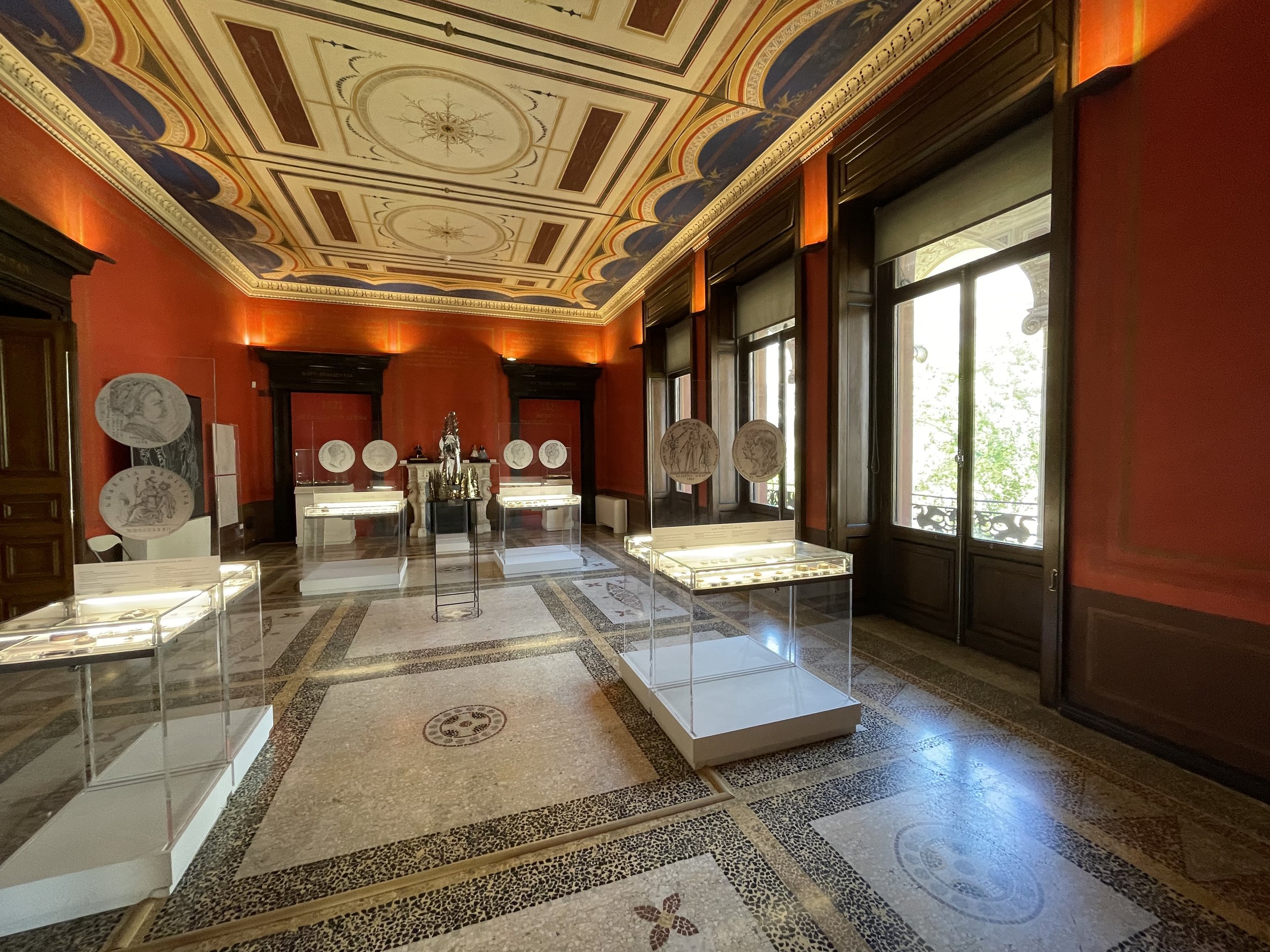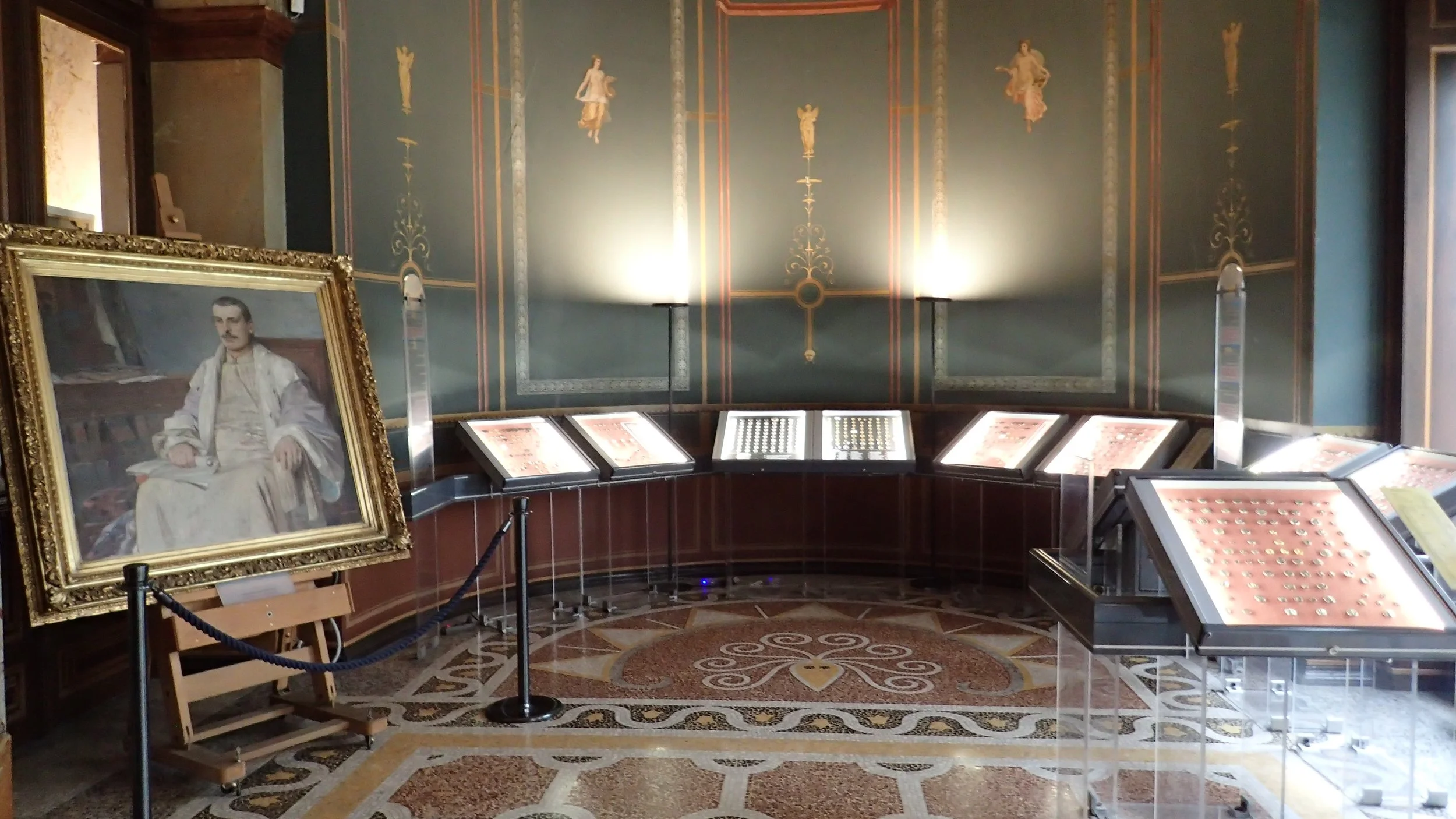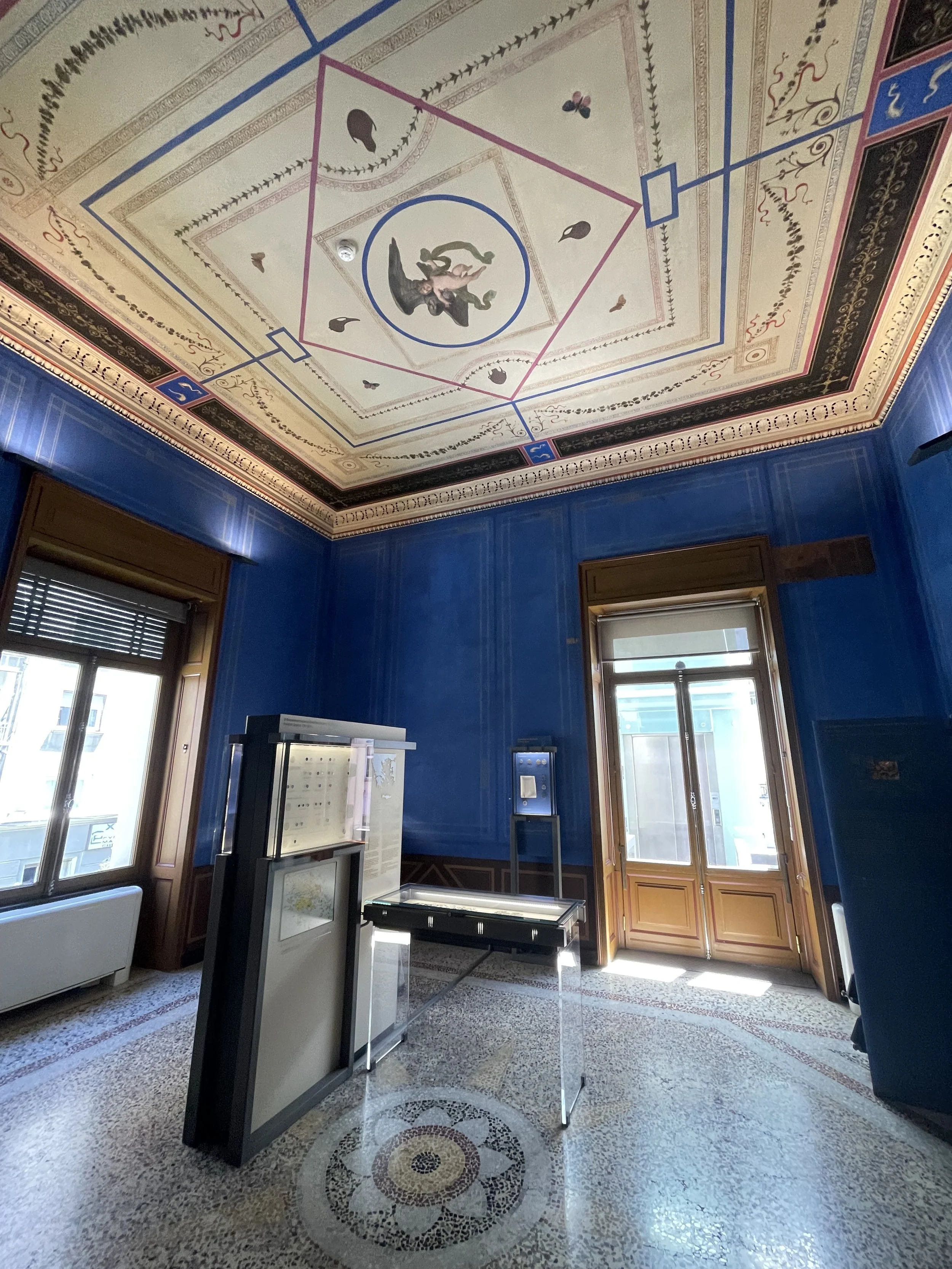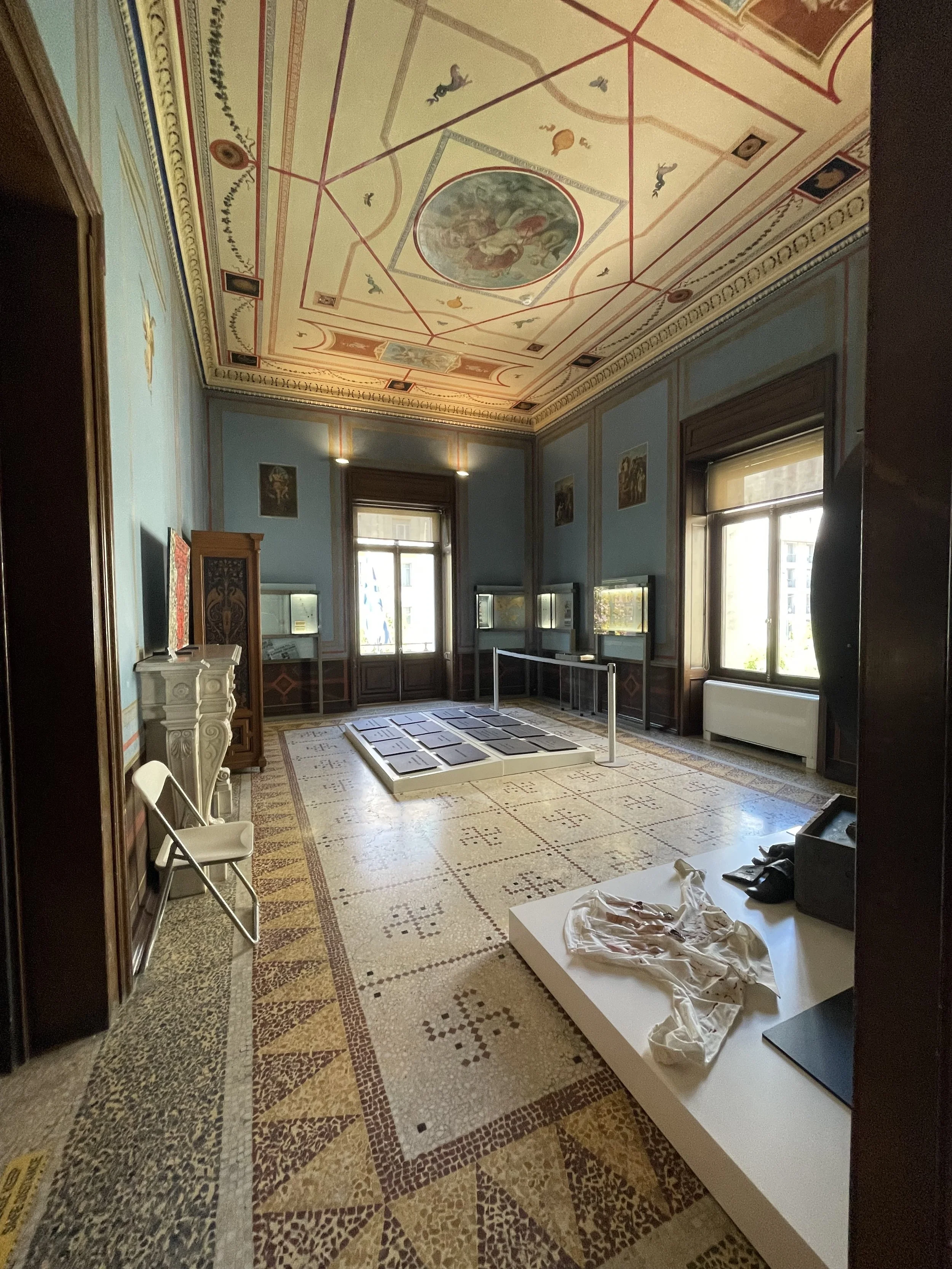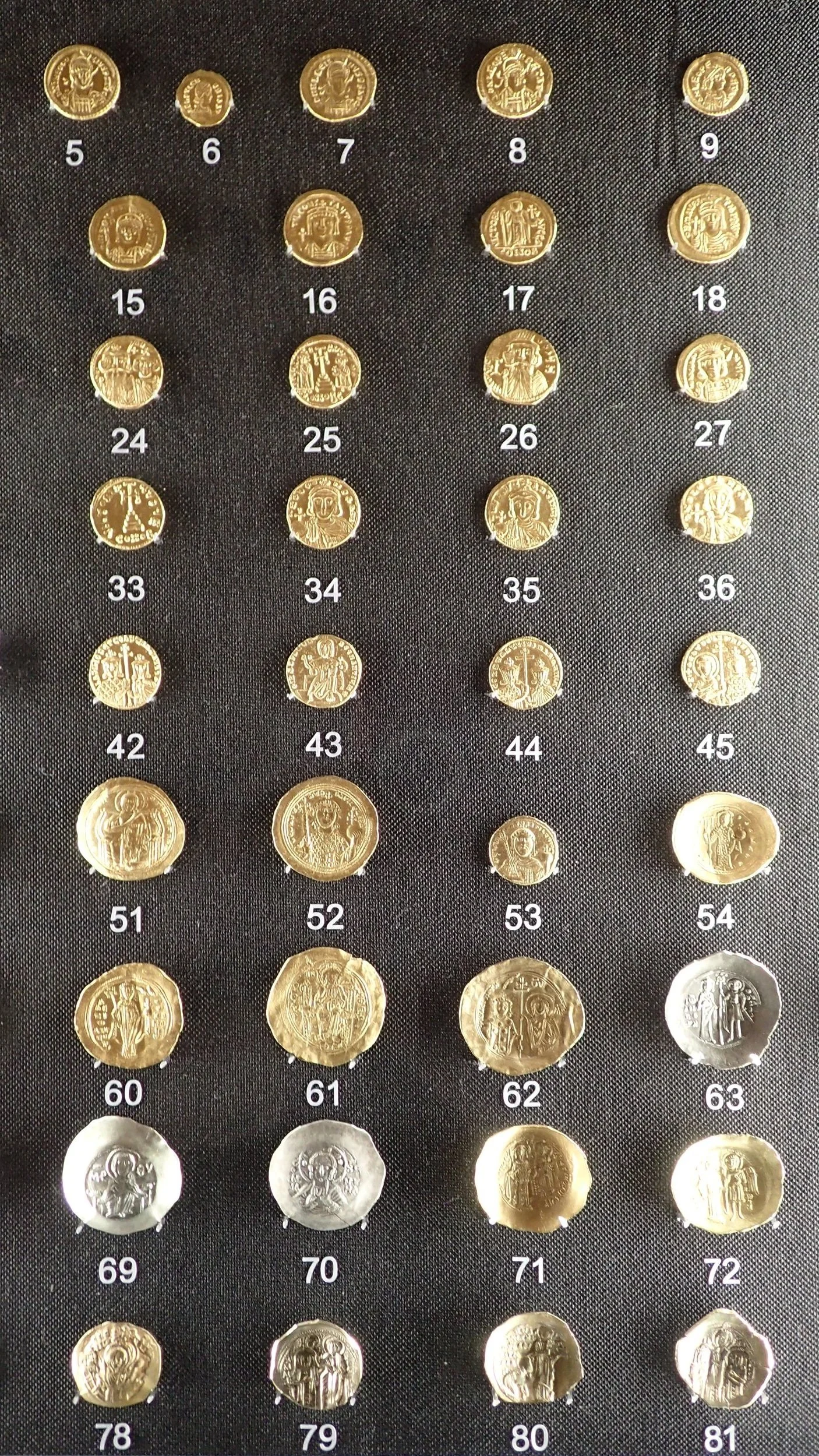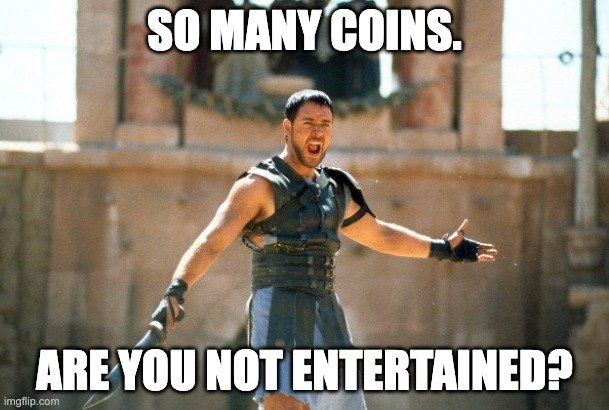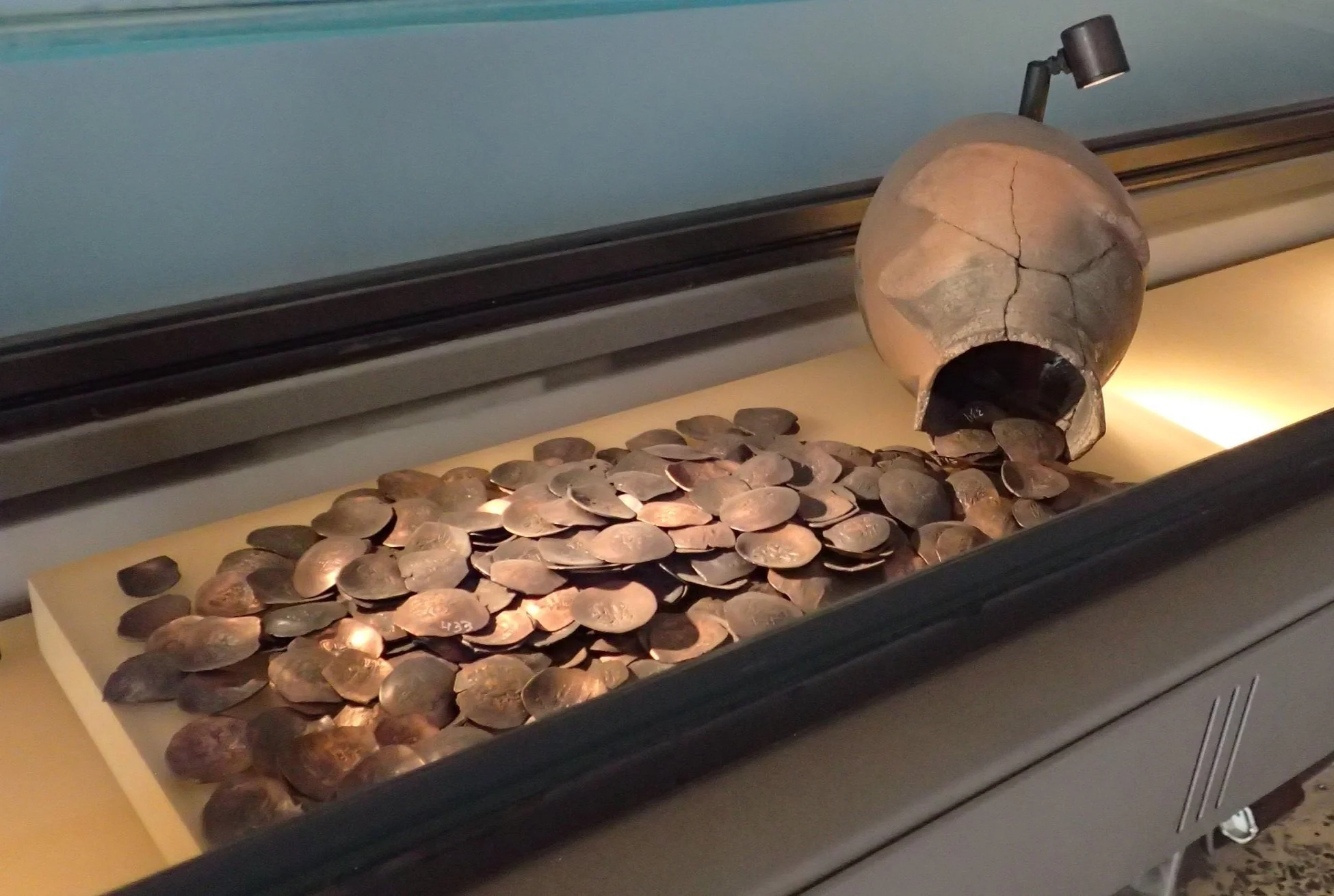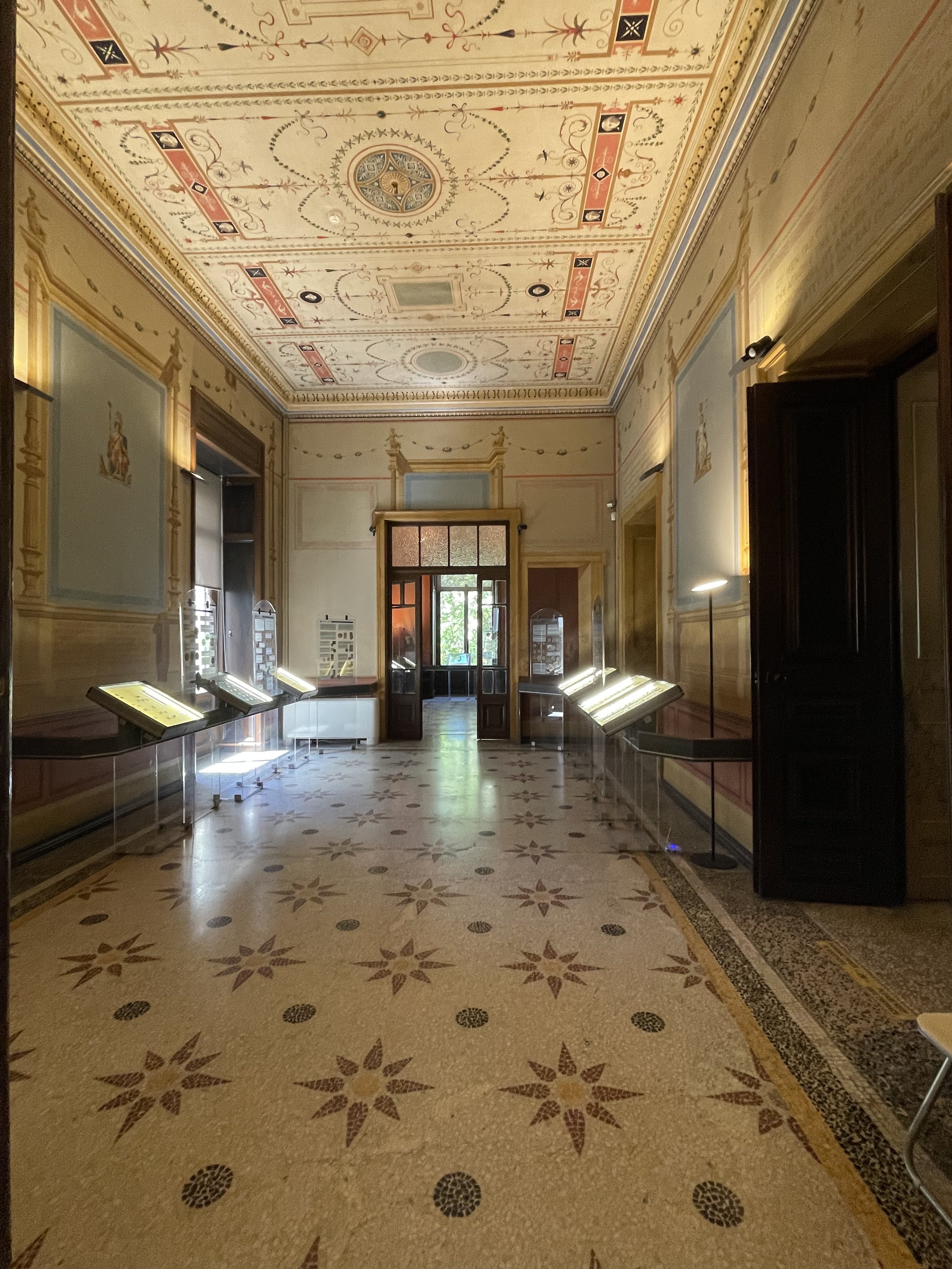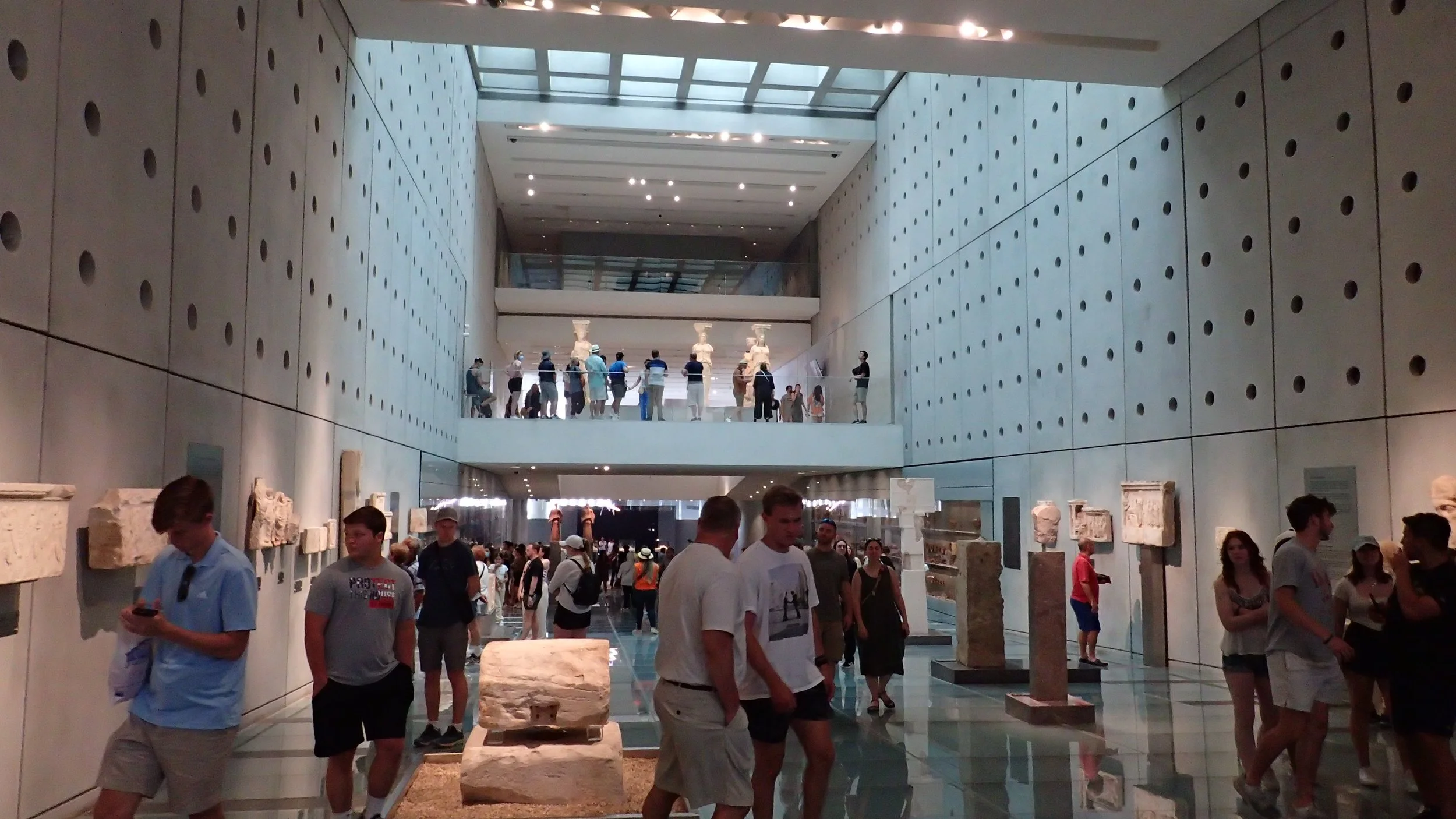Are You Not Engaged?
Today I want to talk about engagement. I know this sounds like a riveting topic but bear with me. More specifically I want to talk about how museums (I use the term museum to both represent the brick and mortar place and those who administer its operations) engage their audience with ancient coins. Get ready, I am about to rhyme off a bunch of questions!
How do museums create an exhibit that encourages an individual to participate in a dialogue with an artifact, to captivate their audience and challenge them to critically think about the past? How do museums draw a person’s eyes to different types of material culture and demonstrate an interplay of activities which allowed for an artifact’s creation? What processes are needed to engage an individual that invites the public into active participation with archaeological practices and the exhibition of material culture? How, or maybe it would be better to ask, should museums try to direct people’s attention, their gaze, to specific objects in order to invoke emotive qualities when walking through a museum?
All of these questions assume that an individual or groups of people are already occupying space within the museum. Therefore, before any of these questions can be addressed, we should first ask: How did these people come to occupy and participate in the exhibition process? Moreover, how do museums engage a single individual to walk through the doors and actively participate in the exhibition processes? Now do this for thousands of people.
Spoiler Alert!
Unlike the Acropolis museum, the Numismatic Museum of Athens is not attracting thousands of visitors a day. I know it is incomprehensible to fathom such an atrocity, but it’s true. Why is this? Frankly, with respect to coins, museums are not very good at engaging people.
The Acropolis Museum Entrance. Photos: Scott Coleman, 2022.
That being said, I am not declaring I have the answers to make coins more captivating, exhilarating, and mesmerizing where thousands of people stampede over each other to see the collection of “Byzantine” follis. Nor am I saying all museums are bad at engaging the public with ancient coins. What I am saying is we, those who are part of the museum administrative processes, should at least talk about, examine, explore, and try to understand why there is minimal active engagement from the public, even the absence thereof, when it comes to coin exhibits. Without dialogue on this topic, and no doubt some of this dialogue will be difficult to discuss, and harsher to face, we will not improve the development and creation of coin exhibits. So with that said, let’s dive into my recent experiences with a couple of museums in Athens that made me even more determined to make ancient/medieval/modern coins more engaging for the public.
The Numismatic Museum of Athens
A brief side note before I dive into this topic. This post is not a sole critique of one institution. The Numismatic Museum of Athens is a one-of-a-kind institution that, in my eyes, has presented coins in a very thoughtful and engaging manner. I have been to many museums with large and small numismatic exhibits, and the Numismatics Museum of Athens is an organization that presents coins in a carefully constructed and well-thought-out manner. The problems I present in this post are shared by all museums with numismatics collections that I have thus far experienced. Therefore, we should preface that not all museums may have these problems. Okay, moving on!
The Numismatic Museum of Athens is a breathing-taking building named Ilios Melathros. The museum was not always located at this location but was moved into the home after extensive restoration in 1998. Ilios Melathros was originally constructed for the Schliemann family between 1878-1879. For a full history of Ilios Melathros click HERE. Ilios Melathros’ architectural design traces its influence back to the Neo-classical and Italian Renaissance and the above pictures highlight some of these architectural features. Without going too deep into its history, as this would make this post a dissertation in its own right, I am just going to provide you with a brief description of the museum.
Photo: Scott Coleman, 2022
First, you enter through the main gate and are greeted by the beautiful and quaint gardens. A staircase to the right leads you to the entrance of the museum or, if you choose, walk straight to the back you will find a cute garden cafe. The modern museum is adapted to the original layout of the home and the exhibits are structured for you to follow a predetermined path with a narrative that showcases the evolution of money and coins in Greek history. Since the exhibits are adapted to the architectural layout of the building, with each room you walk into a new theme is presented. The floors are decorated with spectacular mosaics. The ceilings are framed with artistically designed perforated crown moulding that heats and cools the home. To my understanding, they are no longer operational, but I could be wrong about this.
Photo: Scott Coleman, 2022.
The building is made of stone with wood framing only the windows and doors. A decision that was made to preserve the building in the case of a fire. Each room has its own unique flare. The imagery is emotive and evocative, and you can not help but stand in wonder at the unique beauty of each room. The silence in the entirety of the building is eerily captivating. A pin drop would reverberate and cause the walls to crumble. (There is a slight hum from the A/C units with the occasional chatter of staff.)
Photo: Scott Coleman, 2022.
Speaking of staff, as you enter each room a staff member is there to greet you with either a friendly Hello, or a Γεια σας (Pronounced Yeah-sas, with emphasis on the yea for the first word! I am not a linguist so user beware!), followed by their ever-watching presence. The staff members’ eyes did not leave me and I felt their gaze on my back as I walked around the rooms, taking pictures, as I marvelled at the magnificent artistry that encapsulates each room. The marble staircases, the only place where I was not watched with scrutiny, gleamed bright with the sun striking each step as I moved upward to the second floor where, once again, you are entranced by the building’s beauty.
Oh Shit, There Are Coins In Here!
Aren’t they engaging?
Yup, that is correct. This is a numismatic museum and coin display cases either form a perimeter inside a room or cut through a room. Inside each case, coins are arranged thematically from their origins in Asia minor to the establishment of modern Greek currency. There are Hellenistic Greek coins, Roman Coins, “Byzantine” coins, Medieval coins from various European states (most of which are showcased in a single display), Frankish and Venetian coins, and Ottoman coins. There are Greek revolution medals, early Greek national coins and modern EU coins. So many coins. But do you know what else is in the museum?
SIX PEOPLE! SIX OTHER F@k’n PEOPLE!!
And trust me when I say that they weren’t in there for too long. In fact, there were more people at the outdoor cafe in the Numismatic Museum gardens than there were people in the Museum. (Again, I could be wrong, but this is what I observed and that was the whole point of my trip to the museum this time. To observe museum interaction and engagement.). What the hell is going on? Why are so few people in the museum? Why are people not engaged? Is it because when you see one coin in a display case, you’ve seen them all? Are there too many coins in display cases and to look at them all would force one to spend their entire day at the museum? Do the exhibits look too similar? Do the coins meld together like a copper alloy and become one and the same?
I have no answers, but I am trying to figure this shit out!
The exhibits are themed. Each display case with a focused theme. Plant and animal themes, circulation themes, “Traditional” object themes (the quotes are there because I do not understand the museum’s use of the term traditional. It’s quite vague), art themes, power and rulership themes, and many more. So the displays are unique, thematically speaking, and provide a brief narrative about each display. So where are the people? Are they not entertained?
Even to someone like myself who is obsessed with numismatics and how we excavate coins; talk about coins, how archaeologists record, and pass on coin data to numismatists and museums; how we display and exhibit coins; and how ancient identities are presented to the public through coins has to admit as you move from one room to the next you become a little numbed by the uniformity of each coin exhibit. Many of the coins in their exhibit cases are presented in a numbered sequence, or arranged as a pile of coins spilling out of a jar as a coin hoard. (Click on the hoard link to see a wonderful discussion by Dr. Tine Rassalle on categorization and terminology in Numismatics.) Each room’s coin exhibit, regardless of the differentiating themes for each case, blur into an unchanging progression for the presentation of coins in a two-dimensional form that removes any emotive and tangible qualities that the coins may have had.
Thus, the coin(s) loses its effect on people and, I would argue, loses the ability to engage an individual. A coin’s affective qualities not only come from the visual, but also from touch. How a coin feels against one’s hand. Coins are meant to be touched, handled, and passed from one person to another. There is a communicative quality embedded into coins that do not derive solely from the propagandistic attributes instilled into a coin’s iconography. A coin’s agency (Yes! Coins have agency. See my FAV article on this topic below), acts upon individuals performing the action of exchange. In other words, when an exchange of a coin(s) is occurring, we need to consider how individuals choose a coin(s) for their transaction to occur. Does the coin’s iconography have emotive impacts on individuals? Or is it just money with little attention paid to the King, Queen, Emperor, or Empress who are part of the coin’s identity? Also, how is a coin chosen by an individual to create one of these “traditional” objects found in the Numismatic Museum? For example, a necklace, bracelet, or amulet.
Why these coins? What symbolism is associated with each coin? Is there any symbolic meaning to them at all? Good luck figuring that one out! Photos: Scott Coleman, 2022
One by one, as you stroll through the museum, into each room, a chronological sequence of gleaming gold and silver coins, faded and worn copper-alloy/bronze coins, medals, punch-dies for making coins, and how each empire minted, distributed, circulated, and reused coins throughout the history of Greece are narrated in a visual, no-touchy, exhibition. Is this the problem? Should people be able to touch the coins? I know when I saw students touch some coins brought up for a lecture I did a couple of years back, their faces lit up! The knowledge that they were touching coins that were handled by individuals a thousand to two thousand years ago instilled a new form of curiosity about coins. (FYI: These coins were designated for show and tell, and no coins were hurt in this educational practice of experiential learning!)
So where do we go from here? How do we create more engagement with ancient coins? I mean, people love coins. There is engagement and a huge coin collecting market out there. People buy and trade modern and ancient coins every day (a topic to be discussed another day). How do we change Numismatic Museums around the world…
From This!
To This!
Buzzing, lively, interactive and…
ENGAGED!
To engage people I think we need to address the topic of Touch and we also need to explore new methods of engagement. Here I propose, and as many scholars are already actively exploring, the Digital Touch! And I will leave you with that, as we all need a good cliff-hanger every once and a while. I will address this idea in my next post when I talk about the Acropolis Museum and Engagement.
Καλησπέρα!
My FAV Article:
Kemmers, Fleur, and Nanouschka Myrberg. “Rethinking Numismatics. The Archaeology of Coins.” Archaeological Dialogues 18, no. 1 (2011): 87–108. doi:10.1017/S1380203811000146.

